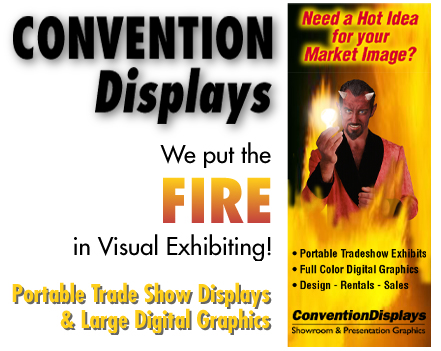|
The Internet and World Wide Web are constantly
evolving with enormous speed, both in population and in
 technology ( high-speed cable modems,
much cheaper processing and data storage and improvements
in compression
). Due to digitalization,
images, sound and text can easily be transferred via computers
from one place to another and services can be performed
all over the world, depending on the place of their best
value. As a result, the Internet has become a global medium
with a great potential of advertising, commerce, and also
to link communications. More and more companies are discovering
Internet as a new media to promote their products and services.
Advertisers who are always looking for an audience to show
their wares to come to the Internet as more people congregate
there. According to the fourth annual survey from the US
Association of National Advertisers (ANA) already two thirds
of US companies advertise online while spending on online
advertising in the US tripled
in 1999, with each company devoting almost USD 2 million
to Internet advertising.
technology ( high-speed cable modems,
much cheaper processing and data storage and improvements
in compression
). Due to digitalization,
images, sound and text can easily be transferred via computers
from one place to another and services can be performed
all over the world, depending on the place of their best
value. As a result, the Internet has become a global medium
with a great potential of advertising, commerce, and also
to link communications. More and more companies are discovering
Internet as a new media to promote their products and services.
Advertisers who are always looking for an audience to show
their wares to come to the Internet as more people congregate
there. According to the fourth annual survey from the US
Association of National Advertisers (ANA) already two thirds
of US companies advertise online while spending on online
advertising in the US tripled
in 1999, with each company devoting almost USD 2 million
to Internet advertising.
The most common advertisement style that is used today
by Web sites is the ad banner. The ad banner is displayed
somewhere on the page, and it might be surrounded by other
images and icons
that also attract attention. Since their first appearance
on commercial Web pages, the value of banner ads has been
debated. Many felt they were physically too small to offer
much branding and some advertisers convinced themselves
that click-through was the only metric by which to measure
ad effectiveness and that without a click-through, no brand
building would occur. But research showed that banners are
very effective in building brand awareness. Surfers may
not click on a banner, but if they see it enough times,
the company's name is drilled into their head, and think
of it at some later time when they are in a shopping mode.
Many advertisers have developed a clear and concise
brand message or theme that consumers have heard any number
of times: "Amazon.com: Earth's biggest bookstore"
for example. The clear and concise message is important
if the advertiser is to lock a brand message into consumers'
long-term memory and have them recalled in the appropriate
circumstance. In general, these messages can be communicated
within a Web ad banner and do not require the consumer to
transfer over to a Web site for additional elucidation.
The exposure alone has value.
The impact of banners on brand awareness was tested for
the first time in fall 1996 by Millward Brown International.
Three brands were tested including a men's apparel
brand, a telecommunications
brand and a  technology
company. The findings were significant and conclusive
for each brand. Awareness was significantly greater among
the banner-exposed (test) group than the non-exposed (control)
group. Specifically, exposure to the ad banners alone increased
brand awareness from 12% to 200% in a banner-exposed group.
The study also compared the impact of the banner ads in
this test to television and magazine norms
from prior Millward Brown studies. The findings were remarkable:
Single exposure to a Web banner generated greater awareness
than a single exposure to a television or print ad. Rather,
the effectiveness of Web advertising seems to stem from
the fact that Web usage is an actively engaging exercise,
similar to reading magazines. technology
company. The findings were significant and conclusive
for each brand. Awareness was significantly greater among
the banner-exposed (test) group than the non-exposed (control)
group. Specifically, exposure to the ad banners alone increased
brand awareness from 12% to 200% in a banner-exposed group.
The study also compared the impact of the banner ads in
this test to television and magazine norms
from prior Millward Brown studies. The findings were remarkable:
Single exposure to a Web banner generated greater awareness
than a single exposure to a television or print ad. Rather,
the effectiveness of Web advertising seems to stem from
the fact that Web usage is an actively engaging exercise,
similar to reading magazines.
While ad banners remain the predominant
advertising vehicle on the Web ( accounting for approximately
54% of total online advertising revenues ), the increased
use of content sponsorships (and interstitials,
micro-sites, etc.) almost doubled during last year's second
quarter, marking a shift towards more creative advertising
on the Web.
Sponsorships of online content are much like event sponsorships:
the hope is that users will more closely associate the content
with the advertiser. If an advertiser has a strictly branding-awareness
goal, sponsorships are an efficient way to achieve this
marketing objective for a lower cost than traditional print.
Obviously, the type of advertising used is directly tied
to the marketing objective. Banners have proven to be the
most effective direct marketing tool, producing quantifiable
units to which an advertiser can apply readable metrics
and make real conclusions with real numbers about the effectiveness
of their campaign.
↑TOP (694
words)
|